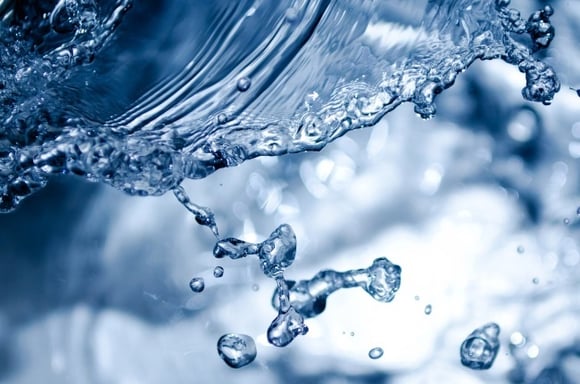
Scope
In any purified water system where low conductivity combined with low or zero bacteria performance is required, a well-designed purified water distribution ring main is an absolute requirement. To polish the purified water to low conductivity and achieve continual low bacteria levels the purified water must be kept recirculating.
The purified water ring main will normally be fed from a purified water tank and stainless steel ring main pump. The ring main will feed to all the required points of use before returning to the purified water tank via a spray ball.
Materials of Construction
Materials used will be determined by the level of purity required together with the industry involved. Typical materials used are 316L stainless steel, ABS, PVC, Polypropylene and PVDF,
The criteria in selecting the material of construction is zero contamination of the purified water.
Disinfection methods, industry sector preferences and cost are also significant determining factors
Any material and pipe work system selected should provide a good selection of pipe work fittings and an uncompromising joint integrity.
Dead Legs & Crevices
By a dead leg, we mean an area of the ring main where stagnant water can be formed. The result of this being the potential growth of bacteria in these areas. By this, we mean that no dead leg or dead space should be longer than 4 internal pipe diameters of the pipe that is feeding it. We are looking to create turbulence within all areas of the pipe work.
The installation standard in materials and workmanship should ensure that there are no crevices in joints where bacteria can grow.
Points of use
Inevitably, with any purified water system the user will require to draw off the purified water for use.
This is normally achieved with point of use valves installed at the point at which the purified water is required for use. The type of valve used is also important. This should be a diaphragm or needle type valve installed so as to be self-draining when not in use.
A common mistake made with purified ring main points of use is for the user to connect hoses to them and leave in place. The ring main and points of use should be designed so that the purified water is delivered directly to the point where the purified water will be consumed.
Velocity
In the velocity of the purified water flowing through the ring main, we are looking in design to achieve circa 2 meters per second. In reality, this is often as low as 1.5 meters per second. In achieving this velocity, we are looking to create a high shearing force along the pipe work wall to prevent any bacteria growth.
Achieving this velocity is a factor of the ring main pipe work size, the flow rate within the ring main and the energy created by the ring main pump.
Typical Equipment Installed Within The Purified Water Ring Main
Different industry sectors have different standards as to what is acceptable to be installed within a ring main. Typical items are:-
- A critical calibrated conductivity instrument confirming the purified water quality before use
- A stainless steel ultra violet steriliser to inhibit the growth of bacteria
- Hygienic sample points for the removal of viable samples for analysis
- Stainless steel heat exchanger for temperature control
- Sub micron filtration for guaranteed particle removal
- Temperature sensor
- Polishing deionisers to polish and maintain the water quality
Temperature
The temperature of the purified water within the ring main is an important factor in inhibiting the growth of bacteria.
Temperature build up is caused by ambient heat pick up within the building that the ring main is installed within and the energy produced by the ring main pump.
Ideally, the temperature of the purified water needs to be maintained to less than 20 degrees Centigrade.
A common mistake made is to install ring main pipe work in ceiling voids adjacent to steam pipe work.
Disinfectability
Within any purified water system ring main it is also important that the user has the ability to periodically disinfect. This is achieved by recirculating an oxidising disinfectant through the ring main and treated water tank.
Considerations in this area are the ability to safely introduce the disinfectant, and the ability to rinse it out and return the plant to duty.
To minimise chemical handling the use of a removable inductor is very practical.
The Installation & Design Contractor
There have been many horror stories within industry where purified water ring mains have been installed by general pipe fitters with no experience of purified water systems. As can been seen by the above information there are many factors which need to be considered to ensure that the final result provides the consistent level of water purity required. Any installation contractor employed should be checked for experience and knowledge in this area.









 We are a specialist independent company involved in water purification and water treatment technologies
We are a specialist independent company involved in water purification and water treatment technologies


